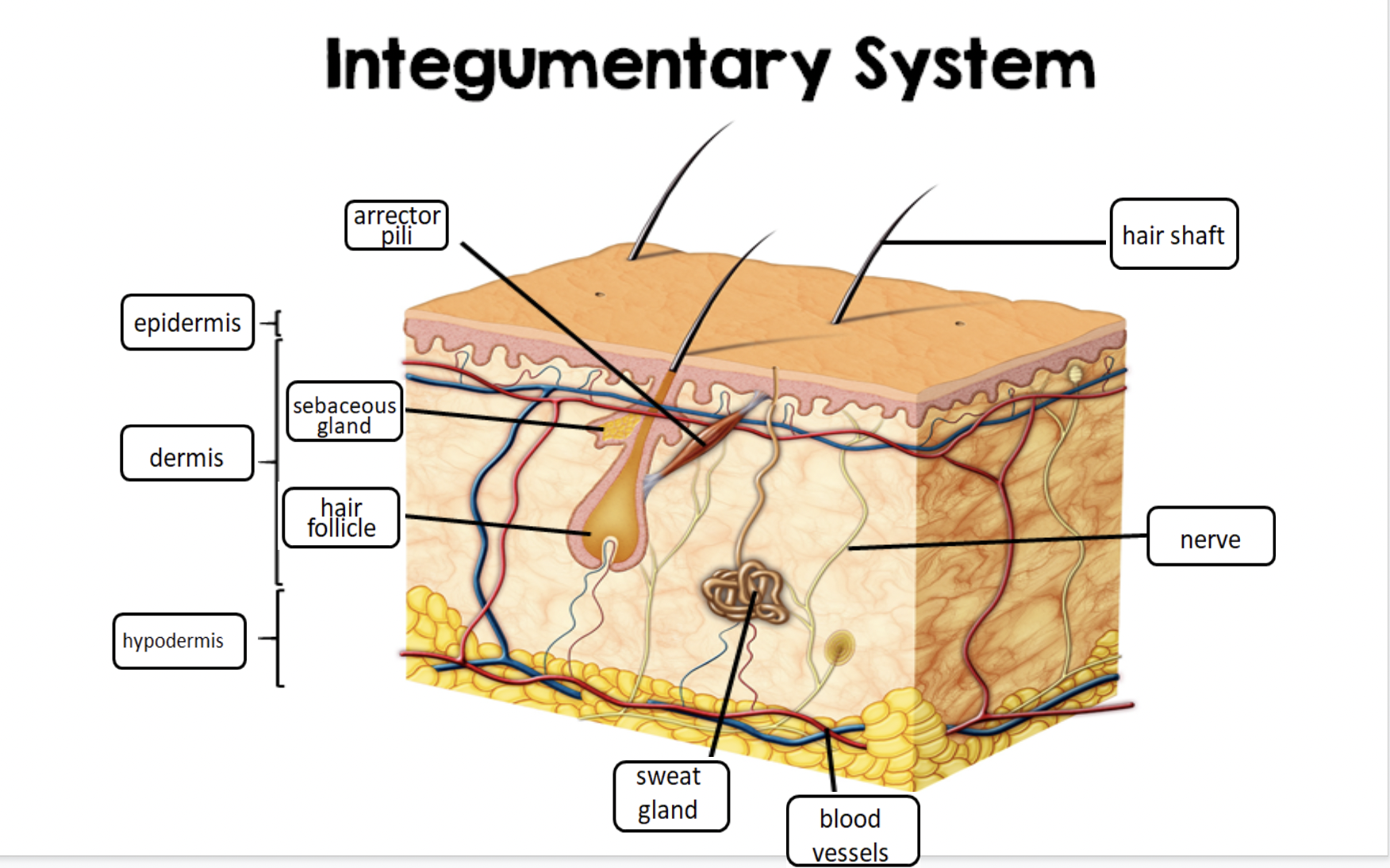Anatomy - ch 5 & 6
5.0(1)
Card Sorting
1/37
There's no tags or description
Looks like no tags are added yet.
Study Analytics
Name | Mastery | Learn | Test | Matching | Spaced |
|---|
No study sessions yet.
38 Terms
1
New cards
four basic types of body tissues
muscle, connective, epithelial, nerve
2
New cards
three types of muscle tissues
skeletal, smooth, cardiac
3
New cards
six types of connective tissue
areolar, adipose, fibrous, bone, cartilage, blood
4
New cards
three types of cartilage
hyaline, elastic, fibrocartilage
5
New cards
where is the "transitional tissue" found
bladder, uterus, uretha
6
New cards
where is the "cardiac muscle" found
wall of the heart
7
New cards
where is the "smooth muscle" found
hollow organs, stomach
8
New cards
where is the "hyaline cartilage" found
ends of the bone (in many joints)
9
New cards
where is the "fibrocartilage" found
back
10
New cards
where is the "pseudo stratified columnar epithelium" found
lining air passages, tubes of the reproduction
11
New cards
where is the "simple squamous columnar epithelium" found
air sacs of lungs, capillaries
12
New cards
where is the "simple columnar epithelium" found
digestive tract and uterus
13
New cards
where is the "simple cuboidal epithelium"
lining kidney tubules, surface of ovaries, duct
14
New cards
where is the "stratified squamous epithelium" found
lining body cavities, skin, mourn
15
New cards
where is the “stratified cuboidal epithelium” found
mammary glands, sweat glands, salivary glands, pancreas
16
New cards
mast cells
prevents clots
17
New cards
macrophages
clear diseases
18
New cards
fibroblasts
produce fibers
19
New cards
osteocytes
bone cells
20
New cards
chondrocytes
cartilage cells
21
New cards
collagen
holds the skin together
22
New cards
functions of the skin
1. maintain homeostasis
2. protective covering
3. retards water loss
4. house sensory receptors
5. excretes small amount of waste
2. protective covering
3. retards water loss
4. house sensory receptors
5. excretes small amount of waste
23
New cards
four type of membrane and their functions
serous, mucous, synovial, cutaneous
24
New cards
three layers of skin
epidermis, dermis, hypodermis
25
New cards
melanin
dark pigments that produce skin color
26
New cards
sebaceous gland
secretes sebum into hair follicle
27
New cards
apocrine gland
responds to being upset, frightened, or in pain
28
New cards
merocrine gland
responds to body temperature caused by heat/body temp
29
New cards
mammary gland
milk glands
30
New cards
ceruminous gland
ear canal, secretes ear wax
31
New cards
arrector pili
attached to hair follicle
32
New cards
know the diagram of the skin

33
New cards
know the information about tattoos
~ they are like a vacuum (punctures the skin, ink runs over the skin then gets sucked into the epidermis once the needle is pulled out)
~ thirty minutes before the session, use a silicone based moisturizer (it’ll give less friction which is what your artist wants)
~ thirty minutes before the session, use a silicone based moisturizer (it’ll give less friction which is what your artist wants)
34
New cards
skeletal muscle
~ striated, voluntary movement
35
New cards
smooth muscle
not striated, involuntary movement
36
New cards
cardiac muscle
striated, involuntary movement
37
New cards
exocrine gland
open onto surfaces (salivary, sweat glands)
38
New cards
endocrine glands
open to tissue fluid or blood hormones